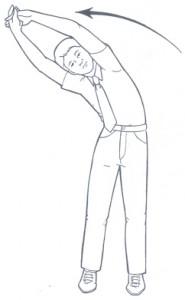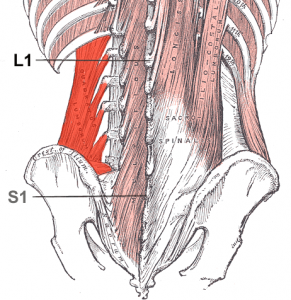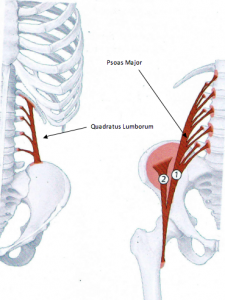Quadratus lumborum pain is all too common in the clients that I work with.
The quadratus lumborum, next door neighbor of the psoas major, is a side bending muscle that connects the pelvis to the ribcage as well as the lumbar spine.
You can’t really have trouble in one without having trouble in the other though the “trouble” manifests in different ways.
Also known as the QL its functions, other than side bending, include extension of the lower spine, lifting the hip and stabilizing the bottom of the rib cage for deep breathing.
There aren’t many problems in the lower back that don’t involve quadratus lumborum pain though it happens for all different reasons.
In my analysis of posture the QL are almost always short and tight due to the upper body leaning backwards, compressing the lower, or lumbar spine, and in turn the quadratus lumborum.
The psoas muscle, when working successfully, acts as a pulley system in the body—the engagement of the psoas pulls the lumbar spine forward and down which allows the erector spinea muscle of the back to tone and lengthen up the back.
When the pelvis is tucked the pulley action of the psoas disappears inhibiting the extension of the erector spinea, forcing the QL to the contract in an effort to help the out of whack erector spinea support the spine.
When I am teaching people to walk I often ask what their pelvis is doing in movement.
Invariably the hips are hiking up from side to side instead of tilting and rotating as they should.
Tilting and rotating is accomplished by the gluteus medius and minimus with the help of the abdominal oblique muscle while the action of hip hiking falls to the quadratus lumborum.
This is not the desired action of the QL and can easily lead to cranky muscles.
 Very often quadratus lumborum pain will be felt only on one side and this can be the result of that QL overworking to compensate for weak pelvic or hip muscles.
Very often quadratus lumborum pain will be felt only on one side and this can be the result of that QL overworking to compensate for weak pelvic or hip muscles.
When doing the side stretch in the picture to the left the quadratus lumborum pain is often felt on just one side and this is usually the feeling of an overworked muscle trying unsuccessfully to stretch.
Confronting quadratus lumborum pain and dysfunction is almost always a part of the protocol for healing back pain. It must include changing movement and postural patterns so that the QL can be allowed to work as designed.


